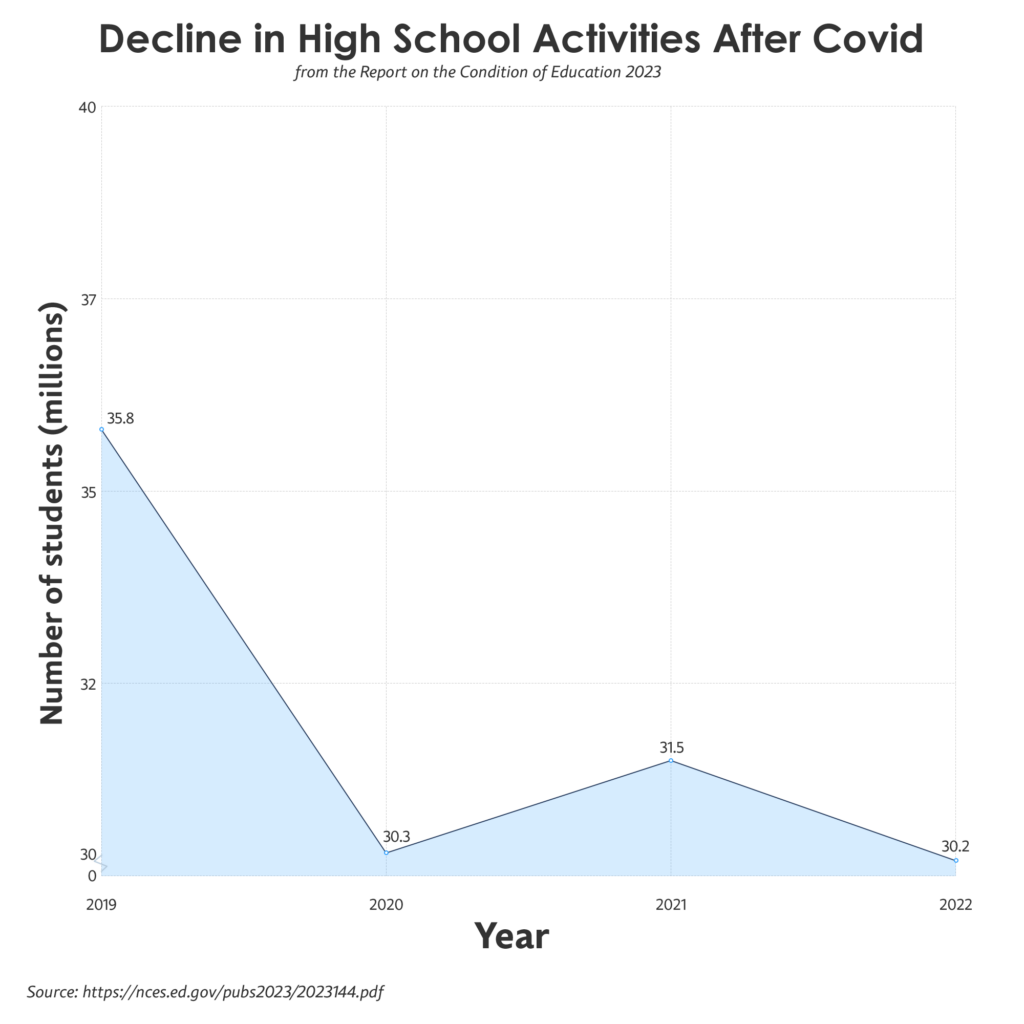The New MVP of After-School Programs—Esports
The COVID-19 pandemic brought about a profound shift in education and extracurricular activities. Schools went remote and 75% of school districts found that their after-school programs were impacted as a result (National Association of State Boards of Education, 2022). Amidst this decline, a new avenue arose to engage students — esports. Esports has not only filled the void but has also redefined the after-school experience for students.

Before the pandemic, after-school activities were thriving, and students had a plethora of options to choose from. These activities played a crucial role in fostering personal development, social interaction, and skill-building among students. However, the pandemic disrupted this ecosystem, as social distancing measures and remote learning became the norm. Participation in traditional after-school activities plummeted as from 2020 to 2021 only 62% participated in the same activity (Afterschool Alliance, 2021). This left students with limited outlets for socialization and personal growth.
Esports has been around for decades but experienced a surge in popularity during the pandemic. It offered a unique solution to the challenges posed by COVID-19.

- Accessibility: Esports is accessible to a wide range of students regardless of their geographical location or physical abilities. Video games are already popular with 97% of teenagers currently playing (ESA, 2022). All one needs is a computer or console and an internet connection.
- Skill Development: Esports requires teamwork, strategic thinking, communication, and discipline. Students are consistently using these skills in academic and real-world settings.
- Virtual Socialization: Esports enabled students to maintain social connections during a time of physical isolation. It provided a platform for friends to connect and compete virtually.
This community became a lifeline for many students who were missing out on the benefits of after-school activities. As the pandemic continued, it became evident that esports was not just a temporary solution; it became a mainstay for after-school activities.
- Reimagining Engagement: Esports attracted students who may not have previously participated in traditional after-school activities. It tapped into a new demographic of students who found their passion in competitive video gaming.
- Sustainable Growth: The popularity of esports has continued to grow even as pandemic restrictions eased. High school students participating in esports tournaments has increased by 300% from 2019 to 2022. (Esports Insider, 2022).
- Academic Benefits: Studies have shown that students engaged in esports often perform better academically. Students possess a 1.7 higher GPA and 10% higher attendance rate than those that do not play esports (National School Boards Association). The cognitive skills developed through gaming, such as problem-solving and critical thinking, are invaluable in the classroom.
Esports has emerged as a beacon of hope during a challenging period. It’s defied the pandemic declines of traditional high school sports like football by 3.07%, basketball by 1.61%, and baseball by 2.77% (NFHS, 2023). It has also redefined the way we view extracurricular engagement through students building skills, fostering inclusivity, and growing the next generation of leaders.
While still a relatively new activity, esports has major potential to play a major role in the future of after-school activities. By providing students with access to fun and rewarding extracurricular activities, esports can help to improve their development and well-being.
Related Posts
